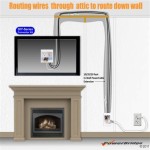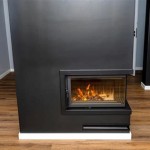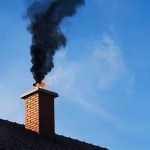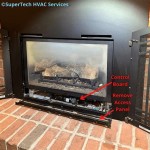Dark Wood Fireplace: Aesthetics, Functionality, and Design Considerations
The dark wood fireplace stands as a prominent feature in many homes, marrying the practicality of heating with the visual appeal of rich, deep tones. From historically inspired designs to modern minimalist interpretations, the dark wood fireplace offers versatility in accommodating a wide range of architectural and interior design styles. This article explores the aesthetic qualities of dark wood fireplaces, delves into their functional aspects, and outlines key design considerations for homeowners contemplating this significant addition or renovation.
Aesthetic Appeal: The Timeless Elegance of Dark Wood
Dark wood, in its various species and finishes, exudes an aura of sophistication and timelessness. The deep hues evoke a sense of warmth and comfort, making a fireplace crafted from dark wood a natural focal point in any room. Whether it's the deep mahogany stain of a traditional mantel or the sleek, ebony finish of a contemporary surround, dark wood possesses an inherent ability to add depth and character to an interior space.
The aesthetic impact of a dark wood fireplace is largely determined by the type of wood used and the chosen finish. For example, walnut offers a naturally rich, dark brown color with subtle variations in grain, while cherry, when stained dark, provides a warmer, redder undertone. Mahogany, known for its luxurious appearance and durability, presents a deep, reddish-brown hue. The selection of wood should complement the existing décor and architectural style of the home.
The finish applied to the wood dramatically alters its appearance. A high-gloss finish enhances the wood’s natural grain and creates a formal, elegant look. Conversely, a matte or satin finish provides a more subdued and contemporary aesthetic. Distressed finishes, often incorporating techniques like antiquing or crackling, can impart a rustic or vintage feel to the fireplace. The choice of finish should align with the overall design vision for the room.
Dark wood also serves as an excellent backdrop for contrasting elements. Light-colored materials, such as marble, granite, or even light-toned tile, create a striking visual contrast when used for the fireplace surround or hearth. This interplay of light and dark enhances the visual interest of the fireplace and prevents the dark wood from overwhelming the space. Similarly, metallic accents, such as brass or copper fireplace tools and screens, can add a touch of glamour and sophistication to the overall design.
The color palette of the room surrounding the dark wood fireplace requires careful consideration. While dark walls can create a dramatic and intimate atmosphere, they may also make the space feel smaller and more enclosed. Lighter wall colors, such as off-white, cream, or pale gray, provide a balanced contrast and allow the dark wood fireplace to stand out as a focal point without overpowering the room. Strategic placement of lighting fixtures can also help to mitigate any potential darkness and highlight the beauty of the wood grain.
Functionality: Heating Efficiency and Practical Considerations
Beyond its aesthetic appeal, the functionality of a dark wood fireplace plays a crucial role in its overall value and appeal. The primary function of a fireplace, of course, is to provide supplemental heating. However, the type of fireplace insert and the design of the firebox significantly impact its heating efficiency. Dark wood, while visually appealing, does not directly contribute to the heating performance. The efficiency is dictated by the firebox design, insulation, and the type of fuel used.
Traditional wood-burning fireplaces, while aesthetically pleasing, are known for their relatively low heating efficiency. A significant portion of the heat generated escapes through the chimney. To improve efficiency, consider installing a fireplace insert, which is a self-contained unit that fits inside the existing firebox. Fireplace inserts are available in various fuel types, including wood, gas, and electric, and offer significantly higher heating efficiency than traditional open fireplaces.
Gas fireplaces offer a convenient and efficient alternative to wood-burning fireplaces. They provide instant heat at the touch of a button and require minimal maintenance. Gas fireplaces can be vented directly through the wall or roof, or they can be ventless, which means they do not require a chimney. Ventless gas fireplaces, however, should be used with caution, as they release combustion gases into the room. Proper ventilation is essential to ensure safe and healthy air quality.
Electric fireplaces are another option for those seeking a low-maintenance and energy-efficient heating solution. Electric fireplaces do not produce real flames, but they simulate the look of a fire with realistic flickering lights and glowing embers. They are easy to install and can be placed virtually anywhere in the room. Electric fireplaces are also a safe option for homes with children or pets, as they do not produce heat on the exterior surface.
In addition to heating efficiency, practical considerations such as maintenance and cleaning are also important. Wood-burning fireplaces require regular cleaning to remove ash and soot buildup. Gas and electric fireplaces require less maintenance but should still be inspected periodically to ensure proper operation. The dark wood mantel and surround should be cleaned regularly to prevent dust and grime buildup. Using appropriate wood cleaners and polishes will help to maintain the wood's luster and protect it from damage.
Design Considerations: Integrating the Dark Wood Fireplace into the Home
Integrating a dark wood fireplace into the overall design of a home requires careful planning and consideration of various factors, including architectural style, room size, and existing décor. The fireplace should complement the architectural style of the home, whether it is traditional, contemporary, or rustic. A dark wood fireplace can be adapted to suit a wide range of styles, but it is important to choose a design that is consistent with the overall aesthetic of the home.
In traditional homes, a dark wood fireplace with ornate detailing and a classic mantel design can enhance the room's elegance and sophistication. Features like fluted columns, dentil moldings, and raised panels can add a touch of formality and grandeur. The dark wood can be paired with marble or granite for the surround and hearth, creating a timeless and luxurious look. Color palettes in traditional settings often involve rich, warm tones like burgundy, gold, and deep greens.
In contemporary homes, a more minimalist approach to the dark wood fireplace is often preferred. Clean lines, simple geometric shapes, and a lack of ornate detailing create a sleek and modern look. The dark wood can be paired with materials like glass, metal, or concrete for a contemporary feel. Color palettes in contemporary spaces tend to be more neutral, with shades of gray, white, and black dominating. A contrasting color can be introduced as an accent to add visual interest.
In rustic homes, a dark wood fireplace with a more rugged and natural appearance is often desired. Reclaimed wood, distressed finishes, and exposed beams create a warm and inviting atmosphere. The dark wood can be paired with materials like stone, brick, or slate for a rustic feel. Color palettes in rustic settings tend to be earthy and natural, with shades of brown, green, and beige dominating. Animal hides, woven textiles, and handcrafted accessories can add to the rustic charm.
The size of the room also influences design choices for the dark wood fireplace. In smaller rooms, a large, imposing fireplace can overwhelm the space. A smaller, more streamlined fireplace design is often more appropriate. In larger rooms, a grander fireplace design can be used to create a focal point and add visual interest. The scale of the fireplace should be proportional to the size of the room.
Finally, the existing décor of the room should be taken into consideration when designing a dark wood fireplace. The color palette, furniture style, and overall theme of the room should be consistent with the fireplace design. The dark wood fireplace should complement the existing décor and enhance the overall aesthetic of the space. Careful planning and attention to detail are essential to ensure a cohesive and harmonious design.

7 Design Ideas Using Dark Wood Fireplace Mantels Elmwood Reclaimed Timber

Dark Wood Home Fireplace Built Ins

91 Dark Wood Fireplace Decor Ideas Home Living Room

7 Ultimate Black Shiplap Fireplace Ideas An Impressive Combination Of Comfort And Sophistication R Home Wall

Wood N Finish Fireplace Mantel Kit Dark Oak

Dark Stained Fireplace Mantle Design Ideas

Fireplace Makeover Dark Wood Before Silver Leaf After Traditional Living Room Orange County By Allison Cosmos Houzz Au

7 Design Ideas Using Dark Wood Fireplace Mantels Elmwood Reclaimed Timber

Smouldering Fireplace Mantels To Heat Up Your Night Laurel Home

7 Design Ideas Using Dark Wood Fireplace Mantels Elmwood Reclaimed Timber
Related Posts








